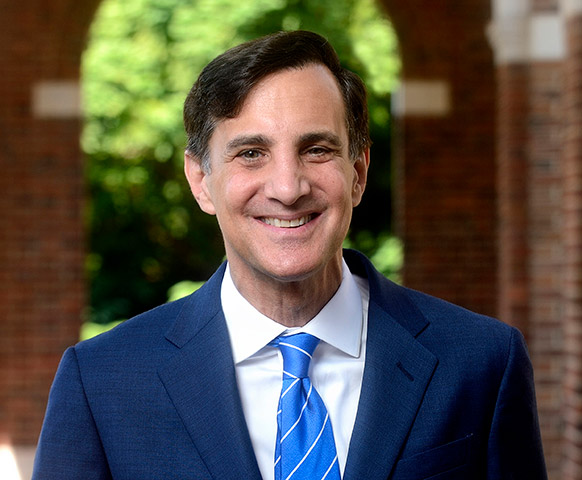
Image caption:
Ronald J. Daniels
President
There are a lot of people to acknowledge when you win a Nobel.
The morning Johns Hopkins School of Medicine Professor Gregg Semenza won this year's Nobel Prize in physiology or medicine, one stood out: Rose Nelson.
She was Gregg's high school biology teacher, who herself had a PhD and, as Gregg has said, taught more than just the facts, inspiring generations of students with a passion for the fundamentals of scientific research. With a certain prescience, Dr. Nelson often reminded her students that when they won their Nobel, they should never forget where that fundamental learning took place.
Gregg never forgot. Over the course of his extraordinary career, he applied those lessons to the pursuit of his discovery of HIF-1, a protein that regulates the cell's response to low levels of oxygen and is involved in a staggering array of biological processes. This discovery has led to momentous advances in our understanding of everything from cardiovascular disease to cancer. And it might have been missed had Gregg not been driven to scrutinize the myriad results—even the negative ones—from his many experiments. Speaking about his Nobel Prize–winning discovery that morning, he remembered Dr. Nelson, saying simply, "She was my inspiration."
Not everyone will win a Nobel, but everyone deserves to be inspired. Gregg's words resonated with me that morning because at Johns Hopkins, we're dedicated not only to nurturing the next Gregg Semenza but also to bringing the next Rose Nelson into the classroom. For years, we have been working with Baltimore City Public Schools to improve STEM education for young people. Through a National Science Foundation–funded collaboration between the Whiting School of Engineering and BCPS called SABES (STEM Achievement in Baltimore Elementary Schools), led by Whiting School Vice Dean for Undergraduate Education Michael Falk, more Baltimore students are learning the elements of scientific discovery and engineering practice through hands-on investigation, experimentation, and application.
Meanwhile, at an elementary school within walking distance of Homewood, students tackle real-world problems through engineering in a STEM lab created and sustained by Hopkins. Their teachers, too, are becoming better at using hands-on investigation as a learning method through our dedicated summer professional development programs, where they study under master teachers in STEM fields. And we are exploring ways to extend this approach to training both students and teachers in a state-of-the-art lab environment systemwide. As Gregg has observed, the importance of teachers is "to make that kind of spark" in their students.
It's a spark that Gregg has certainly ignited in his own students. And whether they follow in his footsteps or Rose Nelson's, we look forward to how they will make those sparks fly in the next generation of young scientists.

Ronald J. Daniels
President







